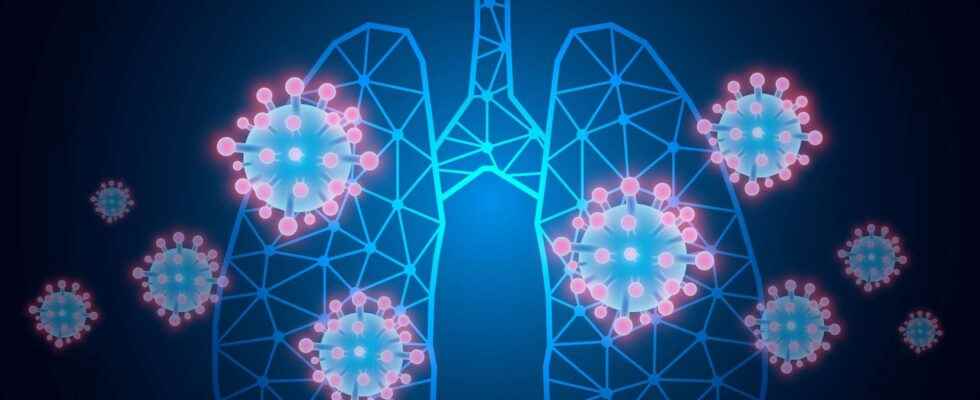Airborne transmission of SARS-CoV-2 is now recognized and it has been shown that the cells of the respiratory mucosa are the main targets for binding and penetrating the virus into the body. Thanks to a model in vitro, researchers have just shown that during infection, the natural defense processes of the epithelial barrier are transiently altered. In addition, a pathogenic mechanism favoring the propagation of SARS-CoV-2 in the airways, involving the destruction of the hair cells of the epithelium by the virus, has just been demonstrated.
You will also be interested
[EN VIDÉO] Breath tests soon to diagnose Coronavirus in less than a minute A Singapore start-up has invented a device capable of detecting the coronavirus by blowing into a device a bit like a breathalyzer. A way to conduct rapid, inexpensive, and large-scale testing.
What are the natural mechanisms of antiviral protection inepithelium respiratory? To protect lungs since foreign bodies can be inhaled during inspiration, there is an effective natural cleaning mechanism. In fact, the respiratory tract is lined with an epithelium made up of three types of cells: basal cells, goblet cells which secrete mucus to trap particles (including microbes) and hair cells which, by their beating, draw the mucus to the laryngopharynx for them to be swallowed or expectorated. This function door called mucociliary clearance and plays a major role in bacterial respiratory infections. On the other hand, the majority of virus Respirators use strategies that affect the mucociliary clearance process by altering hair cells.
Hair cells affected by SARS-coV-2
In study, researchers from the Institut Pasteur / Inserm have reconstructed a model in vitro human bronchial epithelium by growing these cells on a porous air / liquid interface membrane for four weeks, which they then infected with the virus SARS-CoV-2.
They observed a transient alteration of theintegrity of the physiological epithelial barrier by modification of intercellular junctions. In addition, they highlighted anomalies ultra-structural in the model’s infected hair cells, including the loss of eyelashes and a lack of coordination of movements. These alterations are accentuated by the decrease in the expression of a protein involved in ciliogenesis (FOXj1).
At all vertebrates, specialized ciliated tissues play a crucial role in the protection and evacuation of mucus loaded with harmful particles. These results describe a mechanism that could increase the spread of SARS-CoV-2 in the respiratory tracts and allow it to penetrate deeper into the pulmonary alveoli.
Interested in what you just read?
Subscribe to the newsletter The health question of the week : our answer to a question you ask yourself (more or less secretly). All our newsletters
.
fs7
